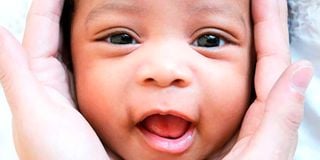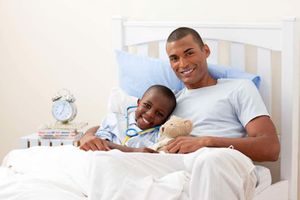Spina bifida: how to help your child cope

If your baby has spina bifida, check their skin every day for signs of redness.
What you need to know:
- Once spina bifida has been diagnosed in your baby, keep medical experts on your speed dial.
- When raising a baby with spina bifida, do not compare your baby’s condition and health challenges to those of another baby with spina bifida.
- Babies with spina bifida can have their condition managed, and go on to live their lives to full potential.
If your baby is born with spina bifida, the first step you will need to take is to arm yourself with facts about this condition and how it will affect your baby. According to the Centre for Disease Control, your baby will most likely suffer from one of the three most common types of spina bifida. These are Myelomeningocele, Meningocele, and Spina Bifida Occulta.
Myelomeningocele: This is the most common form of spina bifida. “When a baby has this condition, a sac of fluid comes through an opening in their back. A part of the baby’s spinal cord and nerves found in this sac are damaged,” says the CDC. With this type of spina bifida, your baby will be at risk of moderate to severe disabilities. These disabilities may range from inability to control bowel movement, inability to move legs, and inability to feel sensations on legs.
Spina bifida occulta: This is the mildest form of spina bifida. If your baby has this form of spina bifida, he or she will have a small gap in the spine, but there will be no opening or sac on the back. “With this type of spina bifida, the baby’s spinal cord and nerves will usually be normal. This means the condition may not be discovered until late childhood or adulthood,” the CDC states. This type of spina bifida will not cause the baby any disabilities.
Meningocele: The CDC explains that with this type of spina bifida, the sac of fluid will come through an opening in the baby’s back. However, the spinal cord will not be in this sac. “This type of spina bifida can cause minor disabilities in the baby, but there will usually be little to zero nerve damage,” the CDC states.
Once spina bifida has been diagnosed in your baby, keep medical experts on your speed dial. Some of the medical experts you may need to get in touch with and stay close to include
An orthopedist: This is the medical expert who specialises in the correction or prevention of deformities, disorders, or injuries of the skeleton and associated structures. This medical expert will work with the baby’s muscles and bones.
A urologist: This is a medical expert who specialises in the treatment of the urinary and reproductive tract system. This medical expert will come in handy in checking and treating your baby’s kidneys and bladder.
A neurosurgeon: this is a medical expert who specialises in the diagnosis and surgical treatment of disorders of the central and peripheral nervous system, including congenital anomalies, trauma, tumors, vascular disorders, infections of the brain or spine, stroke, or degenerative diseases of the spine. This is the expert who will check on your baby’s brain and spine development.
Uniqueness in development
When raising a baby with spina bifida, do not compare your baby’s condition and health challenges to those of another baby with spina bifida. According to the CDC, there are no two babies who have the exact type of spina bifida with the exact type of challenges, responses, and reactions. Certain issues will be more manifest in one baby and not the other. However, with any type of spina bifida, prioritise physical activities, especially if your baby’s movement has been affected. The CDC recommends that your baby can still get to:
- Play with toys, such as activity mats
- Enjoy parks and recreation areas
- Do exercises recommended by their physical therapist
Don’t lock them up or hide them out of fear that they will be stigmatised if the community learns about their condition. Babies with spina bifida can have their condition managed, and go on to live their lives to full potential.
The skin
This will be one of the most affected in a baby with spina bifida. According to the CDC, babies with spina bifida are susceptible to developing sores, blisters, calluses, and burns on their ankles, feet, and hips.
- Check their baby’s skin every day for signs of redness.
- Avoiding hot baths, hot irons, and hot or unpadded seatbelt clasps that may cause burns.
- Make sure the baby does not stay out in the sun for too long.
- Make sure the baby is not sitting or lying in one position for long periods.
Allergies
A large number of babies born with spina bifida are allergic to latex or natural rubber. According to the CDC, protect your baby by ensuring they are not exposed to rubber products including rubber nipples and pacifiers. You can go the extra mile by putting a bracelet or tag on them that alerts other people about their allergies.
Community support groups
Join a community support group with parents of children with spina bifida. This will be good for your emotional and mental well-being. Apart from being an avenue for you to learn more about spina bifida, support groups will also be great ventilation for you to exhale.





